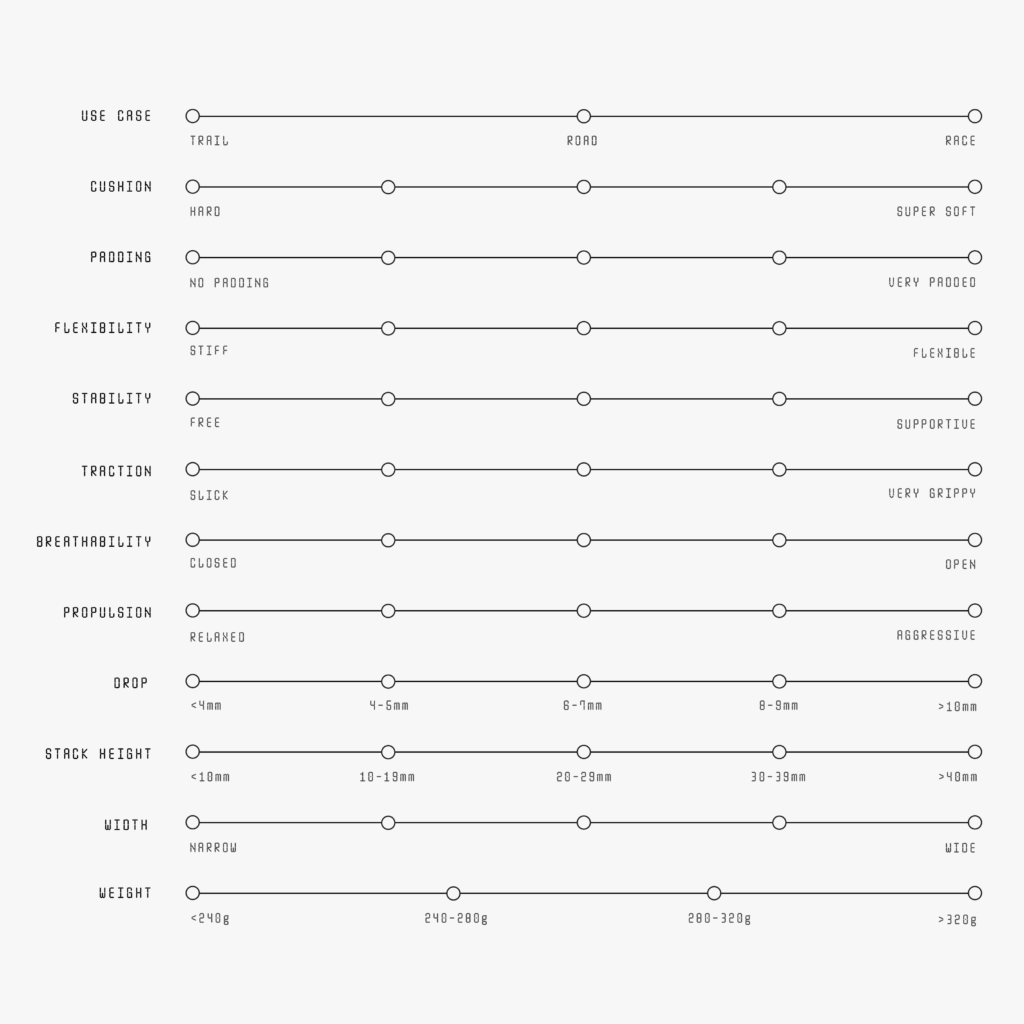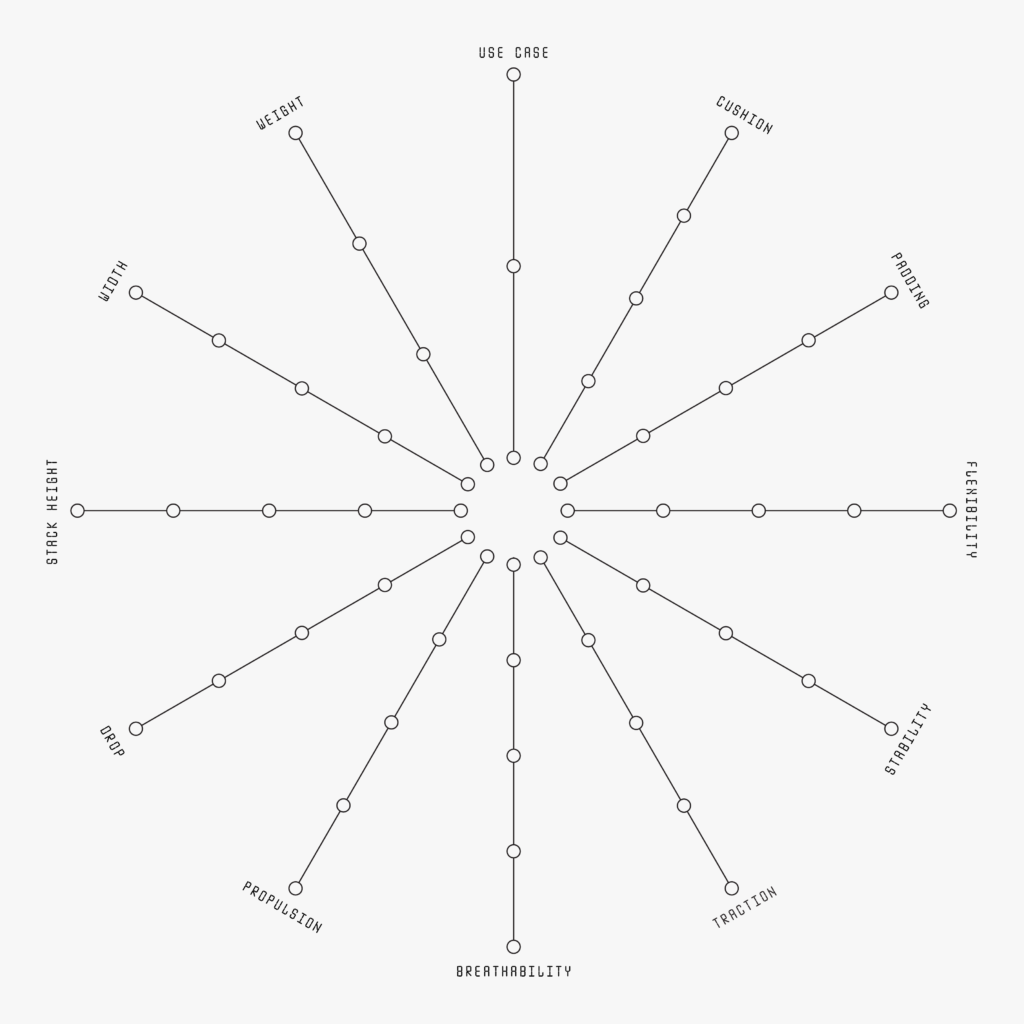Product Index:
Running Shoes
The APR MAG Product Index allows for more meaningful conversations around product by setting the language standards around key, objective characteristics. It pushes reviews beyond the solely subjective experience into the nuances of expertise—facilitating discussion around what makes a product unique and useful.
By indexing your own running shoes and comparing them with the APR MAG Product Index you will find out which qualities work best for you. The index guides you in communicating your preferences by referring to a shoe’s specific characteristics and therefore serves each runner to become a better-informed consumer.
We’ve broken down running shoes into 12 key characteristics: Use Case, Cushion, Padding, Flexibility, Stability, Traction, Breathability, Propulsion, Drop, Stack Height, Width, and Weight.


Use Case
Intended use case by the brand, broken down into three categories: Trail, Road, and Race.
Cushion
The softness of the shoe’s sole, determined by it’s use of foam. More cushioning increases the level of impact protection while running with minimal cushioning comes closer to a natural running experience (e.g. barefoot). Since there are different types of foams, the equation of “the more foam the softer” does not always work. It is crucial to consider which type of foam it is. Ranging from Hard to Super Soft.
Padding
The amount of padding in the upper. Ranging from No Padding to Very Padded.
Flexibility
The ability to flex when compressed from heel to toe and when twisted. Flexibility and Stability are highly interdependent. As a rule of thumb you can say: the more flexible, the less stable. Ranging from Stiff to Flexible.
Stability
The amount of support provided to the natural rolling movement of the foot. The main factors influencing stability are the sole’s construction and it’s width. The construction of the upper and the type of lacing can also add to stability. Special Lacing is not considered within this category. Ranging from Free to Supportive.
Weight
The overall weight of the shoe. For comparison, we always use the weight of size US 9 for men. Ranging from Ultra Light to Heavy—Ultra Light (<240g), Lightweight (240–280g), Medium (280–320g), Heavy: (>320g).
Width
The shoes overall width at its base. This category only refers to the upper to provide information for the overall fit. Ranging from Narrow to Wide.
Traction
The ability of the shoe to maintain stable contact with the ground, mostly determined by the construction of the sole. Added components from external brands such as Vibram or Megagrip can highly influence traction. Ranging from Slick to Very Grippy.
Breathability
The overall mesh density of the upper. Ranging from closed to open
Propulsion
The amount of forward pushing energy return determined by the construction of the sole. Various sole types can add a propulsive effect to the sole such as a Rocker construction or a carbon plate in combination with an energy-returning foam. Ranging from Relaxed to Aggressive.
Drop
The difference in height from heel to forefoot. Ranging from 0mm to 12mm.
Stack Height
The highest measured point on the sole, measured at a men’s US 9 and a women’s US 7. For road races, World Athletics regulations allow a maximum stack height of 40mm. For track races, the stack height cannot exceed 25mm. Ranging from <10mm to >40mm.
EXPLORE PRODUCT INDEX
